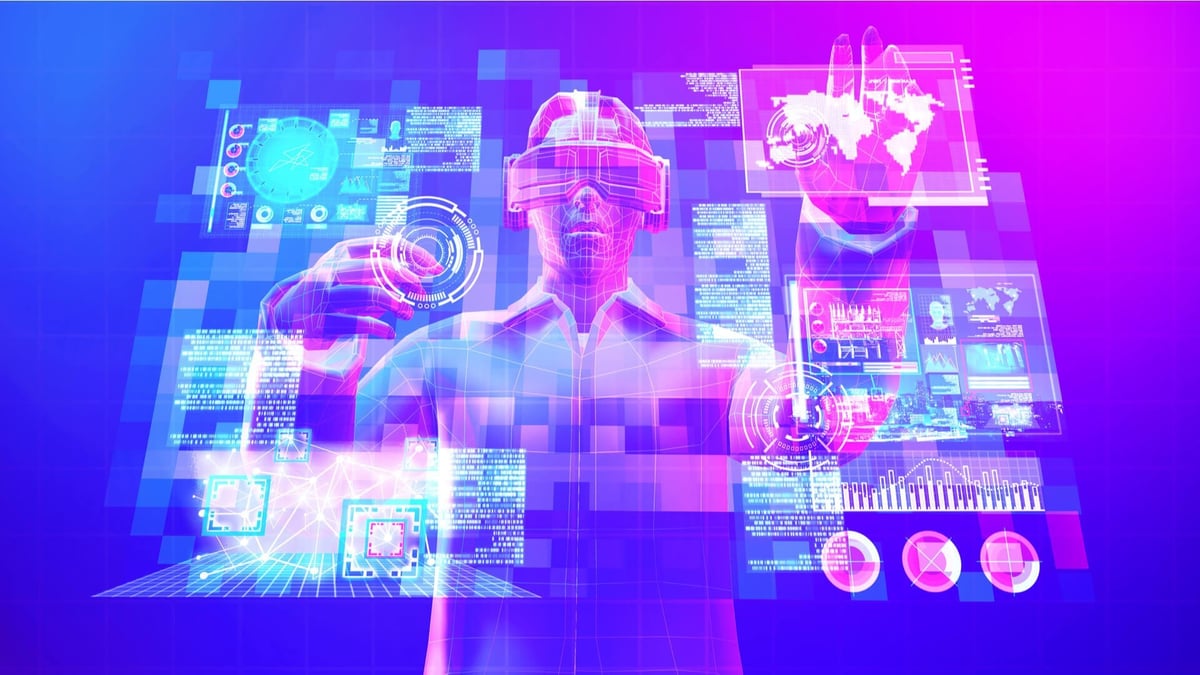Our physical world has mostly been a disappointment. COVID-19, climate disasters, job losses, inflation, cybercrime, wars, and other calamities are continuously shaping our realities.
Thanks to the metaverse, all that is about to change. Imagine a place where we can safely walk the streets, shake hands with strangers, play games, buy food, art, lands, and cars, travel, work, all while sitting at home, feet up.
It’s where no wars, borders, or customs exist and no passports are needed. It’s virtually happening every day now, literally.
Web 3.0 and the metaverse are revolutionizing reality and commerce as we know it.
Metaverse and Web 3.0 join hands
Web 3.0 is where AI, AR/VR-based immersive environments, and blockchain merge to create open internet experiences. When added with the metaverse, a marriage of sorts between AR, VR and physical reality, we become avatars in a world economy with its own currency and financial systems on the blockchain.
The threat to our current currency systems is no longer confined to Bitcoin: It’s now tokens in the metaverse that allow you to make virtual purchases, trade and invest in.
A few pieces of technology are needed to make this happen: Headsets and gloves. The Oculus Rift headset as well as SONY PlayStation VR, HTC VIVE, Samsung Gear VR, Google Cardboard and other similar headset devices will transport you into this virtual reality. Gloves will let you touch it.
The new economy
Creating immersive virtual marketplaces is already big business, despite its embryonic start. You can build your own space, sell products, locally and globally or trade collectibles using Non-Fungible Tokens or NFTs, a $40 million market monthly.
And we can already recognize early adopters of the VR pseudo-metaverse technologies.
Gaming
In the gaming industry developers are incorporating immersive VR into games in a way to prompt usually young players to make more entertainment-based purchases, including unique avatars (NFTs), and engagement tools. If you’ve ever played video games like Fortnite, Animal Crossing, and Roblox, you’ve essentially been exposed to metaverse realms.
Retail
The global furniture brand IKEA allows potential buyers you to visualize their furniture in their homes using AR on smartphones. Competitors like Anthropology and Lowe’s also joined the trend.
Converse lets us try on shoes virtually with its sampler app to check out how they’ll look on our feet.
We are already familiar with 3D viewings of real estate developments allowing potential buyers to conduct a 3D tour of hundreds of properties in a matter of hours, not weeks, using a few clicks.
But now, investment firms are buying digital lands in metaverse environments like Sandbox, Upland, and Decentraland, and building virtual retail businesses where people can shop for art, games, and even homes, attend concerts, or watch movies.
Decentraland, for example, has districts for shopping, fashion, and the arts, and provides MANA coins to make purchases. This metaverse has 90,000 parcels of land and it’s where Tokens.com bought property for around $2.5 million where it plans to develop a virtual commerce hub for luxury fashion brands.
SuperWorld, another virtual real estate platform, offers 64.8 billion plots of land around the globe, each for sale as an NFT.
The tokens or cryptos used to make purchases and the value of properties there will grow in value as more people join these metaverse worlds.

Metaverse employment and job interviews
Hiring opportunities for Web3 users will increase.
Solidity, a computer language embedded in the Ethereum blockchain to build and launch smart contracts and Discord, a social media platform favored by many gamers and the crypto community are opening job opportunities.
Here’s a phenomenal stat: Gaming has nearly 3 billion regular participants. The play-to-earn gaming model with Axie Infinity, an early adopter of NFTs and which boasts over 1.8 million daily active users, is offering an income of about $10 a day, and up to $1,000-$2,000 a month, just for playing the game.
As for job interviews, who needs Zoom, Teams or Google Hangouts when the metaverse can allow people to sit together virtually in close contact with each other?
Same for remote working. Why not sit and work at your virtual desk, interact with peers, management, or clients, in a virtual environment that feels real, all while munching potato chips in bed at home?
Digital currency investor Grayscale estimates the global market for goods and services in the metaverse will soon be worth $1 trillion.
However, the most exciting part of the metaverse is yet to come.
Haptic gloves: Touching the virtual world
Haptic gloves are now allowing virtual objects to be felt, giving the virtual world a more physical feel to it.
bHaptics, for instance, is one VR gaming company that has announced TactGlove, a pair of $299 haptic gloves that employ 10 Linear Resonant Actuators on the tips of your fingers and thumbs to deliver a sense of touch when combined with hand-tracking capabilities on headsets.
People, we are heading towards living an alternative life. In fact, some predict that, in the near future, half our time will be spent in the metaverse or in some form of virtual environment.
Start planning for it.
You are your avatar. Otherwise, you’re just a relic of the physical past.








